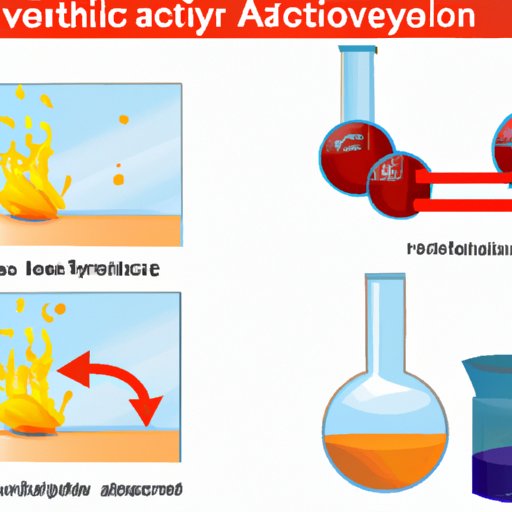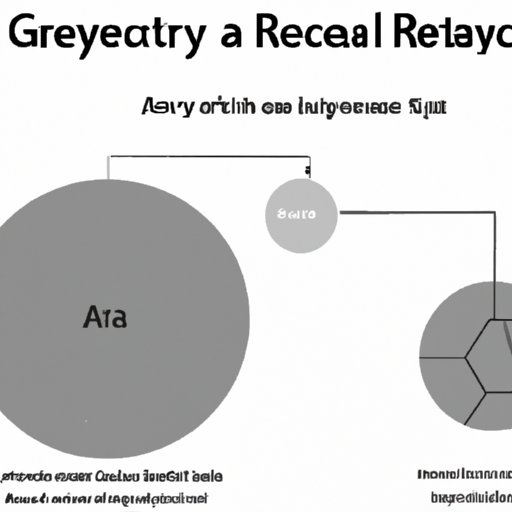
Understanding Reactivity: Is It a Physical or Chemical Property?
Reactivity is an essential concept in chemistry and plays a crucial role in our daily lives. It determines how substances interact with each other and how they undergo chemical reactions or physical changes. Reactivity is a property that has long been debated as either a physical or chemical property of a substance. In this article, we will explore the science behind reactivity and its relationship to physical and chemical properties.
Definition of Physical and Chemical Properties
Before delving deeper into reactivity, it’s essential to understand what physical and chemical properties are and how they differ from each other.
Physical properties refer to the characteristics of a substance that can be observed or measured without changing its chemical composition. These properties include melting point, boiling point, color, solubility, density, and thermal and electrical conductivity, among others. Physical changes, such as changes in phase or size, do not alter the chemical composition of the substance.
Chemical properties, on the other hand, describe how a substance interacts with other substances, leading to a change in its chemical composition. These properties include reactivity, corrosiveness, flammability, and toxicity, among others. Chemical changes result in new substances with different chemical properties than the original substance.
Comparison between Physical and Chemical Properties
Physical and chemical properties differ in terms of the type of characteristics they describe and the changes they produce. Physical properties describe the observable characteristics of a substance, while chemical properties describe how a substance interacts with other substances, leading to changes in its properties. Physical changes do not alter the chemical properties of a substance, while chemical changes do.
Characteristics of Reactivity
Reactivity is a property that describes how readily a substance reacts chemically with other substances, leading to a change in its chemical composition. Reactivity can be influenced by several factors, including temperature, concentration, particle size, catalysts, and pressure. Reactive substances can undergo chemical changes even without the presence of a chemical reaction.
Breaking Down Reactivity: The Science Behind the Physical and Chemical Properties
Understanding reactivity requires an in-depth knowledge of the scientific principles that govern it, as well as the factors that affect it and the mechanisms that drive it.
Scientific Principles That Govern Reactivity
The rate of reactivity is determined by the Kinetic Molecular Theory. According to the theory, all matter is composed of particles (atoms or molecules) that move constantly and at different speeds. The speed of these particles increases with higher temperature and decreases with lower temperatures. The size of these particles also affects their reactivity. Smaller particles will react faster than larger ones due to their increased surface area.
Factors That Affect Reactivity
Several factors can influence reactivity, including temperature, concentration, particle size, surface area, pressure, and catalysts. Temperature influences the rate of reaction by increasing or decreasing the kinetic energy of the particles. Concentration affects the number of particles in a given space, making collisions between particles more likely to occur. Particle size and surface area increase the likelihood of particle collisions, leading to faster reaction rates. Pressure affects reactivity by increasing the effective concentration of particles, making more collisions possible. Catalysts are substances that increase the rate of reaction by lowering the activation energy required for a reaction to occur.
Understanding Reaction Mechanisms
Chemical reactions occur through a complex series of steps known as reaction mechanisms. Understanding these mechanisms is crucial to understanding reactivity. Reaction mechanisms involve the breaking and formation of chemical bonds between atoms and molecules. Catalysts can increase the rate of reaction by facilitating these steps.
Reactivity in Everyday Life: How Physical and Chemical Properties Work Together
Reactivity is essential in our daily lives, from the food we eat to the products we use. Here are some real-world examples of reactivity:
1. Rusting: The reaction between iron and oxygen in the presence of water results in rusting. The rusting of iron is an example of a chemical reaction that changes the properties of the metal, making it less durable and leading to its eventual corrosion.
2. Digestion: The process of digesting food involves enzymes that catalyze the breakdown of carbohydrates, proteins, and fats into smaller molecules that can be absorbed by the body.
3. Combustion: Combustion is a chemical reaction between a fuel source and oxygen that releases energy in the form of heat and light. Combustion is used to power vehicles and generate electricity.
The physical and chemical properties of a substance work together to create the reactivity that is essential for these processes. For example, the reactivity of the iron in rusting is due to its chemical properties, while the presence of moisture enhances the reaction due to its physical properties.

The Grey Area: Defining Reactivity and Its Connection to Physical and Chemical Properties
While reactivity is an essential concept in chemistry, it is not always easy to define. The definition of reactivity is somewhat grey, and its relationship to other properties is complex.
Grey Area Surrounding Reactivity
Some chemicals are considered reactive, while others are not, depending on the context in which they are used and the specific chemical reactions they undergo. For example, oxygen is not generally reactive, but in the presence of flammable materials, it can cause combustion, resulting in a fire.
Importance of Understanding the Intersection Between Physical and Chemical Properties
Understanding the relationship between physical and chemical properties is crucial to understanding reactivity. The physical properties of a substance, such as its size, shape, surface area, and concentration, can affect its chemical properties, such as its ability to react with other substances. Similarly, the chemical properties of a substance can affect its physical properties.
Different Approaches to Defining Reactivity in the Scientific Community
There are different approaches to defining reactivity in the scientific community. One approach defines it as a chemical property that describes a substance’s ability to undergo chemical changes. Another approach defines it as a physical property that describes a substance’s ability to interact with other substances.
Unlocking the Mystery of Reactivity: Exploring Its Place in Physical and Chemical Properties
Reactivity is a complex property that requires in-depth research to unlock its full potential. Scientists have different perspectives on the nature of reactivity and how it relates to physical and chemical properties.
Different Perspectives on Reactivity
There are different perspectives on reactivity. Some view it as an intrinsic property of matter that depends on the chemical properties of a substance, while others view it as an emergent property that arises from the interaction between different substances.
Theories of How Reactivity is Related to Both Physical and Chemical Properties
One theory of how reactivity is related to both physical and chemical properties is that a substance’s physical properties affect the rate of reaction and the extent of reaction. The chemical properties of the substance determine the type of reaction that will occur. Another theory is that reactivity is an emergent property resulting from the interaction between substances with different physical and chemical properties.
Importance of Continued Research on Reactivity
Reactivity is an essential concept in chemistry and has numerous applications in daily life. Continued research on reactivity will lead to a better understanding of how substances interact and how chemical reactions occur. Understanding reactivity can also help us design reactions that are more efficient and eco-friendly.
Reactivity: A Dynamic and Multi-dimensional Property
Reactivity is a dynamic property that is affected by several factors, including physical and chemical properties. It is also a multi-dimensional property that can manifest in different ways, depending on the context in which it is used.
Definition of a Dynamic Property
A dynamic property is a property that changes over time or under different conditions. Reactivity is a dynamic property because it changes with varying temperature, pressure, particle size, and other factors.
Ways in Which Reactivity is Dynamic
Reactivity is dynamic in several ways. For example, a substance’s reactivity can change depending on the concentration of other substances present in the environment. The presence of a catalyst can also affect a substance’s reactivity, making some reactions occur faster than others. Reactivity can also be affected by changes in temperature and pressure.
The Multi-dimensional Nature of Reactivity
Reactivity is multi-dimensional because it can manifest in different ways, depending on the context in which it is used. For example, reactivity can manifest as flammability, corrosion, or toxicity, depending on the substance and the conditions under which it is used.
The Debate Continues: Exploring Different Sides of the Reactivity Debate
Despite ongoing scientific research, the debate about whether reactivity is a physical or chemical property remains unresolved. Here we explore some of the different viewpoints on the issue.
Two Opposing Viewpoints on Reactivity
One viewpoint is that reactivity is a chemical property that describes how readily a substance undergoes chemical changes. The opposing viewpoint is that reactivity is a physical property that describes how easily a substance interacts with other substances at a given temperature and pressure.
Evidence for Both Sides of the Argument
There is evidence to support both viewpoints. Some chemists argue that reactivity is a chemical property because it depends on the chemical composition of the substance. Others contend that reactivity is a physical property because it can be influenced by the physical properties of a substance and the conditions under which it is used. Both viewpoints have merit, and the resolution of the debate may depend on the context in which the property is being discussed.
Encouragement for Readers to Form Their Own Opinion
While the debate about reactivity may not be resolved anytime soon, it is essential to continue exploring and researching the concept to fully understand its potential. Readers are encouraged to form their own opinions on the matter and to push the boundaries of the current understanding of reactivity.
Conclusion
Reactivity is a critical concept in chemistry that is still the subject of ongoing scientific research and debate. It is a dynamic and multi-dimensional property that can be affected by numerous factors, including physical and chemical properties. Understanding reactivity will lead to a better understanding of chemical reactions, substances’ interactions, and the applications of chemistry in our daily lives. The continued research on reactivity promises to open up new possibilities for eco-friendly reactions and more efficient chemical processes.





